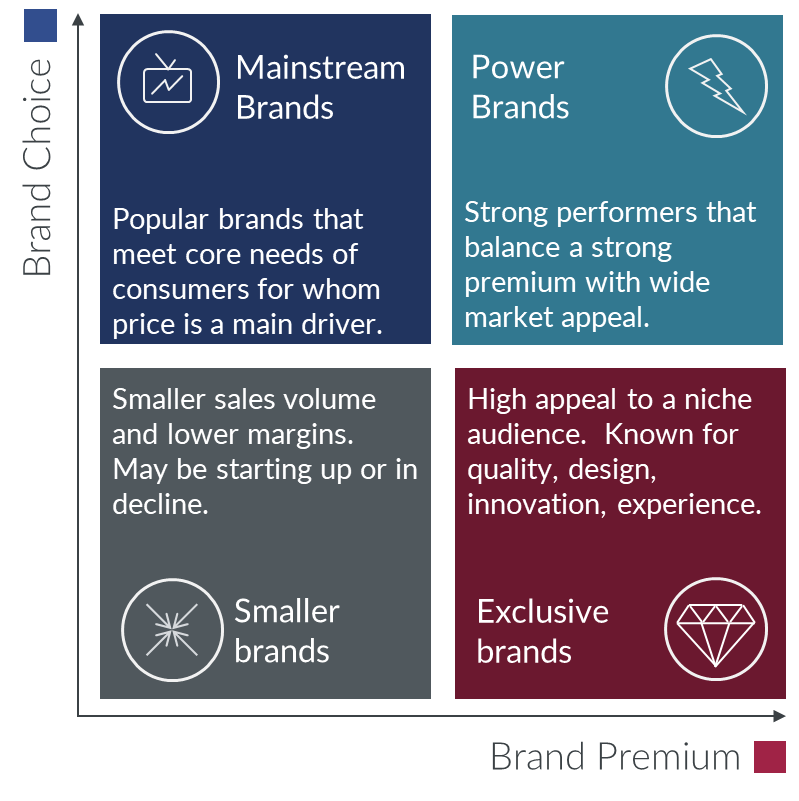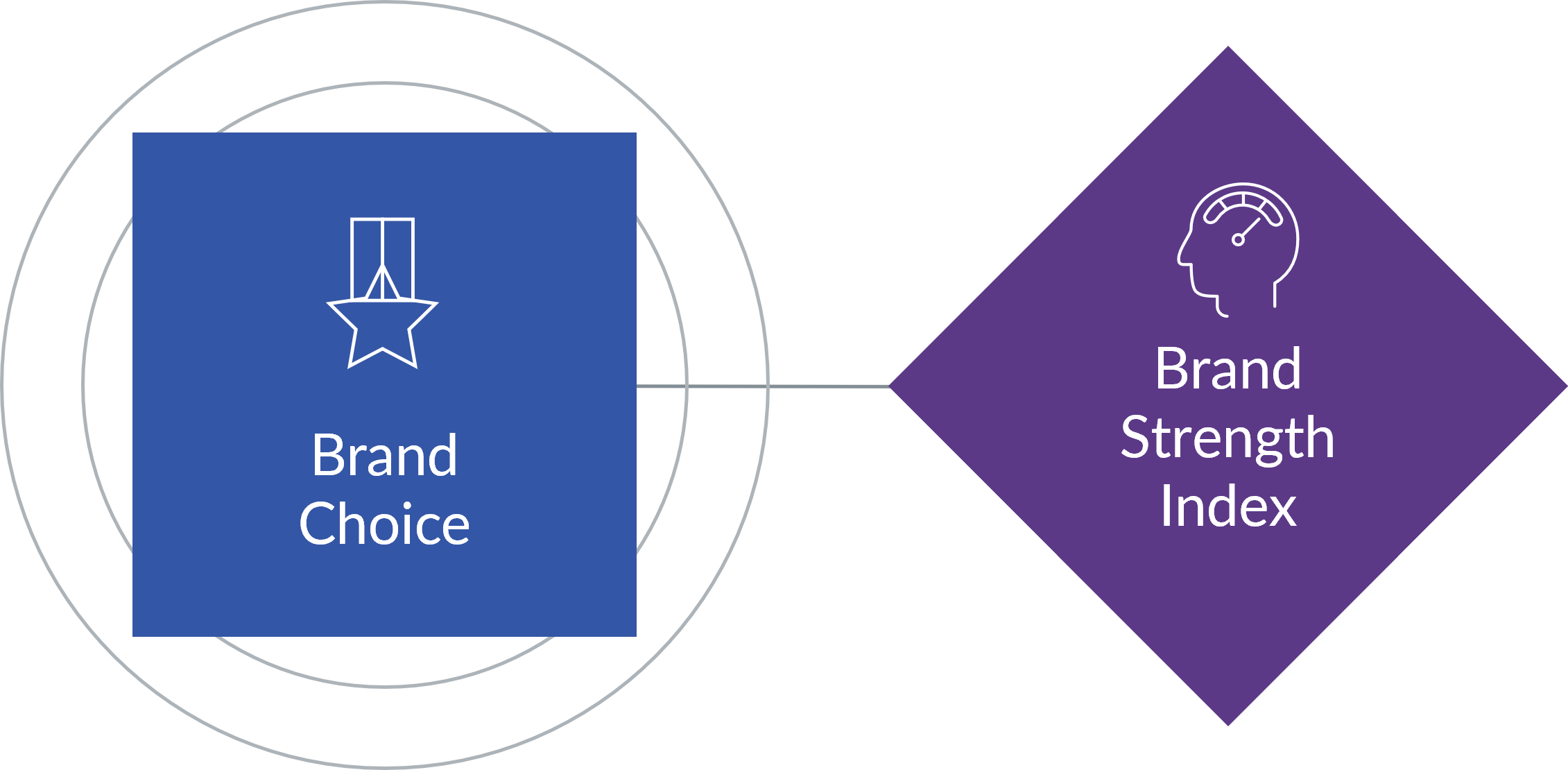What it means to be a Smaller Brand
Run by entrepreneurs around the globe, it could be said that Smaller Brands make the world go round. Often operating in high growth markets, they have lower market shares, sales volumes and revenues than their larger counterparts. Country-specific examples include Seat cars in France, Pantene hair care products in Germany and Hisense TVs in Italy.
Smaller Brands have a larger overall presence than any other brand type, making up 50 to 60% of all businesses. However, they account for just 10% of global revenues.
The challenges faced by Smaller Brands are complex and diverse. They may be brand new start-ups. Well-established brands ticking over from year to year. Or older brands at risk of decline. Investment budgets are almost always limited. Their strategies must therefore focus on reaching their consumer base effectively and affordably through precise targeting, strong messaging, and brand articulation. They need to clearly define and communicate their next strategic play – and their biggest challenge will be deciding where to go next.
Continue reading to find out how Smaller Brands can create a strategy that truly resonates.
For more insights to help define your path to growth and find the right ways to build brand strength, watch our on demand webinar.

A Smaller Brand's winning strategy
Of all the brand types, taking the right approach to Brand Premium and Brand Choice strategies is most important for Smaller Brands. There are more risks and more hurdles to overcome. However, following the strategic advice set out below can help Smaller Brands create and maintain Brand Strength, and carve a niche in their target market (bearing in mind that all markets and categories operate differently). Focusing on Brand Choice rather than Brand Premium can be an easier route for smaller brands to develop and move on.
-

The main reason a consumer chooses a Smaller Brand are attractive price points, accessibility and convenience. If a brand decides to go for a more premium approach, they’ll need to improve on quality, differentiation and communication of brand values. This can be hard to achieve on a lower budget. However, there are steps that can be taken, including:
1. To build premium, making sure the product ‘delivers the goods’, from packing the right features to offering best-in-class quality. Brands looking to achieve this will therefore need to consider investing in these superior product features.
2. Finding ways to meet the consumer’s aspirations, that it may be harder for bigger brands to emulate. Promoting products as ‘handmade’, ‘fully-recyclable’ or ‘eco-friendly’ will provide certain audience segments with an extra reason to purchase.
3. Endorsement can be tricky on a limited budget. So, consider making a colleague, or even the CEO, the ‘face’ of the company on social media. The target audience will feel genuinely engaged with the brand and enjoy the novelty of direct communication with a real person online. Or, if budgets permit, engage a celebrity with mass reach on social media who is likely to appeal to the target audience. (This also helps build Brand Choice.)
-

Making sales is clearly essential to the Smaller Brand’s survival. To maintain sales volumes and revenues, they should consider the following:
1. Exposure brings familiarity, so prioritize marketing tactics that are likely to reach wider audiences rather than highly targeted campaigns. Aim to reach out to as many people as possible and be persistent! Run continuous campaigns rather than short bursts – people need to know about the brand.
2. Build Brand Attachment and loyalty. If consumers have a great buying experience, they’re likely to come back time and again – and tell their friends. Ask satisfied customers to leave positive reviews to further spread the word.
3. It sounds obvious, but meeting consumer needs is key. The focus should be on finding a balance between functionality and desirability, whilst making products or services easy to access and use.
4. For local businesses, focus on creating a presence and reputation in the community. Consumers are now more aware of and willing to support their local brands and buy from businesses on their doorstep. Look at low-cost options to promote the business locally, such as social media and online business directories.
Insights from GfK Brand Architect
These rich brand insights come from GfK's brand framework, GfK Brand Architect. It takes a radically new approach to brand measurement by combining data with leading-edge analytics to measure the seven keys to brand strength and how they influence consumers decisions.
Learn more about the changes in the marketing landscape and explore what brands need to know to maximize their potential. Watch a webinar about how you can improve your brand intelligence and contribute to your business success
Topics to be covered include:
- The role brands play in driving value for their businesses
- Defining the four key brand segments and how brands can navigate these
- What drives brand strength, and how the drivers for Brand Choice differ from those for Brand Premium
- How GfK can provide personalized guidance to help brands achieve the best results
Each brand category is unique
Not all brands are power brands - some focus on luxury segments, others focus on the mainstream market, and still others focus on a very niche audience. Each of these segments has a different strategy to reach its audience. Curious to discover more about each of these segments? Read more below:
Exclusive Brands
These brands have high appeal to a niche audience and are known for quality, design, innovation, and experience.
Mainstream Brands
These brands are popular with most because they meet the core needs of consumers who are most concerned about price.
Power Brands
These brands are strong performers that are able to balance a brand premium, while still maintaining broad market appeal.



